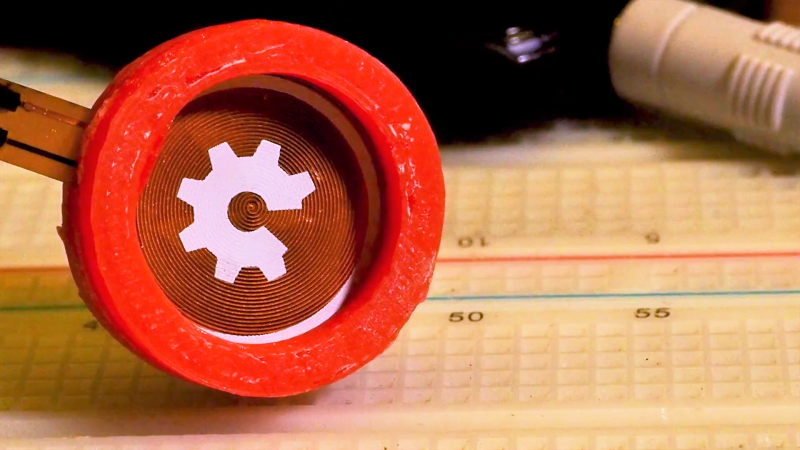Speakers used to be largish electromechanical affairs, with magnets, moving coils, and paper cones all working together to move air around in a pleasing way. They’ve gotten much smaller, of course, small enough to screw directly into your ears or live inside the slimmest of smartphones and still delivery reasonable sound quality. The basic mechanism hasn’t changed much, but that doesn’t mean there aren’t other ways to make transduce electrical signals into acoustic waves.
Take these speakers made from flexible printed circuit boards, for instance. While working on his flexible PCB soft actuators, [Carl Bugeja] noticed that the PWM signals coursing through the coils on the thin PCB material while they were positioned over a magnet made an audible beeping. He decided to capitalize on that and try to make a decent speaker from the PCBs. An early prototype hooked to a simple amplifier showed promise, so he 3D-printed a ring to support the PCB like a diaphragm over a small neodymium magnet. The sound quality was decent, but the volume was low, so [Carl] experimented with a paper cone attached to the PCB to crank it up a bit. That didn’t help much, but common objects acting as resonators seemed to work fairly well. Check out the results in the video below.
This is very much a work in progress, but given [Carl]’s record with PCB creations from robotic fish to stepper motors built right into the PCB, we’d say he’ll make substantial improvements. Follow his and others’ progress in the Musical Instruments Challenge part of the 2018 Hackaday Prize.


















This technology is called Electro Dynamic Planar Loudspeaker (EDPL) in case you want to know more about it.
After some refinements he’ll arrive to the orthodynamic driver design. They have been around since at least seventies…
He seems to be about to reinvet orthodynamic drivers that have been around since seventies or so…
would it be possible to use two pcbs, instead of one and a magnet..
possible one normal pcb and one flexible..
Sure. That should work if the magnet is strong enough and the coils for the magnet will not overheat. Not real power efficient.
I am sure the folks at Magnepan would love to hear about this breakthrough. Hey, what if you used an electrostatic charge to move a flat diaphragm?
I think a dude named Martin Logan would be interested in some sort of electrostatic audio replication unit…
You normally want the momentum of the cone to be as low as possible so you can change it’s motion rapidly with minimal energy input. Not sure how that works out when the force can act directly on the material of the cone, but suspect lower mass the better still.
Awesome idea.
It seems like you could use this principal to make a micro fluid pump. Enclose one side with a printed chamber, two check valves, and you have a little pump.